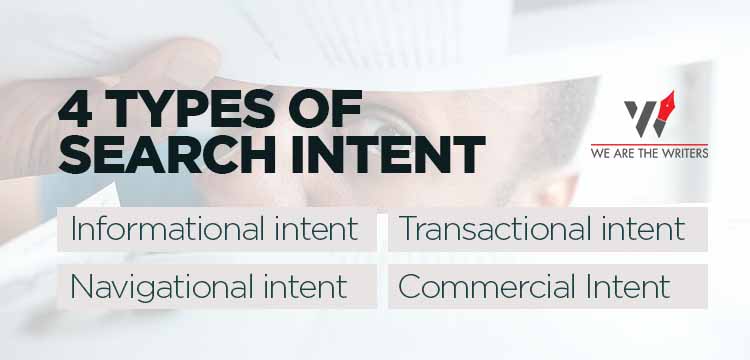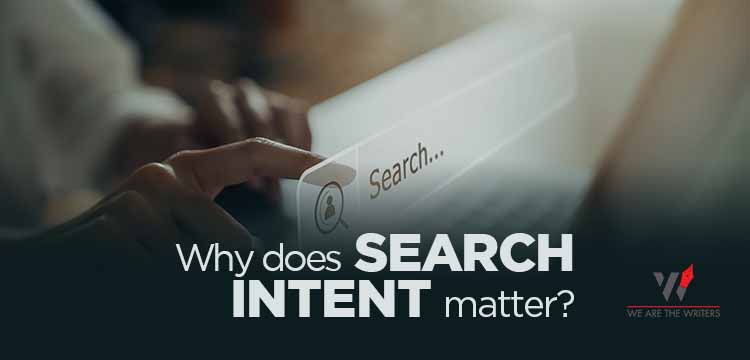To land a mention in the Google Search Engines Results Page is the goal of any content writer and the company. There are hundreds of parameters that Google takes into consideration while ranking the content.
One of those parameters is Search Intent. It is the most overlooked criterion that many don’t pay attention to in the manner as they should. To think about it, searcher’s intent is the intention of the audience behind making the search. As a content writer, you would not be able to figure out what to offer to the audience without carefully analysing and working towards that intent. Thus, searcher’s intent becomes one of the prime factors to help you land on the search engine result’s page of various search engines.
Read this to know how to top in SERP : SEO CHECKLIST TO RANK NO.1 in GOOGLE’S SERP
Table of Contents
What is Search Intent?
Search intent means the purpose of the search made online. It is also called user intent or audience intent. The main idea behind making any kind of search is finding an appropriate answer or response. These searches can be questions, a specific website, a guidance or anything. As a content writer, you need to figure out what is the purpose and intent behind the search.
You, as a content writer, are not the only one who studies user intent. The Google algorithm analyses it as well. It runs the writeup through a test to match what the searcher has asked for and what has been provided as a response. It only ranks the best synced content on its SERPs.
What is a Search Term?
A search term is a specific word or words that are used to make the intention of the search more specific. It clarifies what the searcher wants to know in the sentence that he/she has typed in the search bar. The google SERP will show the result best matched to the term that was used for searching. In a query, ‘best way to clean carpets at home’ the search term is ‘best way to’.
The user is searching for the most effective ways to clean a carpet at home. The user intent will only be met when the Google SERP displays results that provide highly efficient ways of doing the work.
Most basic terms are; buy, deals, best, cheap, how to, what, etc.
4 types of Search Intent

There are a few distinct types of search intent. We’ll go into the four most commonly used ones:
1. Informational intent
As the name suggests, informational intent is solely for the purpose of seeking some information. Any kind of information that is meant to inform or educate satisfies the informational intent of the curious audience’s mind.
There are specific questions in this case that tell what the audience wants to know about. A major chunk of the queries that are on the search engines are of informational intent. Terms like what, why, where, when and how can easily be used to search on the web. Or it can be a simple addressal of the query if the user wants to get a holistic knowledge of the query.
Suggested Read : How to become a content writer : Step by step guidance
What needs attention is that google understands and works on the user intent in a detailed manner. It doesn’t just simply match the best suited result to the query, it uses its own intelligence and then matches the most appropriate result that answers the query without any ambiguity. The most common terms used in Informational intent are ‘how to, what, best way to’, etc.
Example
‘What is causing climate change?’. Here, the sole motive of the user is to gain information about the things that are causing climate change.
2. Navigational intent
Navigational intent is for the purpose of navigating a web address. Any kind of website comes under navigational intent. Users having this intent have the purpose of visiting a website.
A navigational query is considered an alternative to feeding a full URL in the search engine. The intent behind this is to be able to access the website without having to type the full website link.
Example
‘YouTube, Instagram, or WhatsApp Web’, etc. These are the terms that will navigate the user to the websites.
3. Transactional intent
This is the type of intent that leads you to make a transaction. It has terms like ‘buy, purchase, best prices etc. a lot of people buy things online and even more search for them on the web. The purpose is to get information regarding the prices and other financial terms like buy, deals, discount and stuff related to a transaction, along with an option to make a transaction online. The intent here is to directly make a purchase with pre-existing knowledge.
Example
‘deals on iPhone, buy novels by Charles Dickens’, etc. The intent of the searcher is to indulge into a transaction online.
4. Commercial Intent
Commercial intent aims to know about the chances of being a target audience or a customer. This intent is only present in transactional queries and defines the new prospects. The transaction may not happen at the moment but it definitely shows that the customer is interested and is likely to make a purchase of the item(s) he/she is looking for.
Example
‘best prices on dishwashers, reviews, comparisons of products’, etc.
Know more about search engine : Complete Beginners Guide to SEO | 8 min read
Why does search intent matter ?

Talking specifically about Google, the ultimate goal is to provide information which is most relevant to the user intent. The whole business model depends on the accurate responses to the questions being asked. Your website ranking hugely depends upon your catering to the search intent.
Google also states its mission is to “Organise the world’s information and make it universally accessible and useful.”
Whereas, things are a little different when working in SEO content. The first step is creating SEO content according to the audience intent. It should align with what the user is looking for.
The whole game of search intent can be understood with the help of the ‘search terms’. The words the audience is using to find answers or enquire about their query are the intention behind their search. While providing answers, you should be specifically targeting those words the most.
Suggested Blogs:
The importance of user intent can be understood with the help of an example of demand and supply. When a user searches for something on a search engine, he expects a response, in the form of an answer. The answer can be any kind of a response catering to various types of user intent. It is the demand that the user has and you, as a content writer, have to supply the content that satisfies the demand.
For example, when a user searches ‘apple pie’, the intent behind it is most likely to be the recipe for making apple pie, or the second best would be the places that serve apple pie. An answer about the history of apple pie or the number of calories it has would not target the basic search intent of the user, thus, making your supply of content go in vain.
Similarly, if you want to rank ‘best hotels’ you should be providing information about the location of the hotel, the amenities that it offers, the rates and other things that would be of use to the visitors of that hotel. This is informational intent. Though other important details about the hotel such as its owners and the year it was built or how many employees work there would prove useless for the searcher.
Intent Optimization and the Google Search Engine Results Page
Intent optimization is the process of analysing and strategizing the audience’s intent behind making a particular search in order to provide them best results. It is a layered concept that needs careful perusal before creating and eventually delivering content.
For a product’s intent (transactional), content about its etymology and parts used in the manufacturing process will be of no use, the audience will be bored and will leave the website. Similarly, an informational intent will not be met if the delivered content immediately starts suggesting prices and deals to make the purchase of the query. It will pressurize the searcher because he/she intends to gain knowledge at that point of time.
Informational blog : BEST SEO TOOLS TO OPTIMIZE CONTENT IN 2021
Benefits of Intent Targeting

Search intent impacts the way semantic SEO delivers results. The results are relevant and best suited as per the users’ demands. Optimizing the user intent can bring more effective traffic to your business’ website.
Improved conversion rates
Your landing pages will have more conversion rates when the first time an audience comes on your landing pages. Receiving plenty of information on the initial pages itself, the intent of the user is satisfied and if the case is of transactional intent, he/she is not hesitant to make a transaction.
Reduced bounce rates
Bounce rate is the amount of users that come on your page but then leave it because they don’t get enough and accurate information that they intended to. Carefully analysed search intent and then creating as well as delivering content according to that reduces the bounce rates hence increase traffic as well.
More page views
Answering the user’s search intent makes them want to explore the rest of the content that is in your website and they would come again with their queries as they have experienced a credible result.
Know about getting leads :
End note
The search intent is the curiosity behind making the search. You will be able to master the game if you are able to provide the results that cater to the searcher’s curiosity. If performed correctly the results can show a subsequent rise in the number of audiences, quality of the traffic, interactive engagement and other improved content metrics.
You may also refer to Backlinko blog for more info





 WhatsApp
WhatsApp